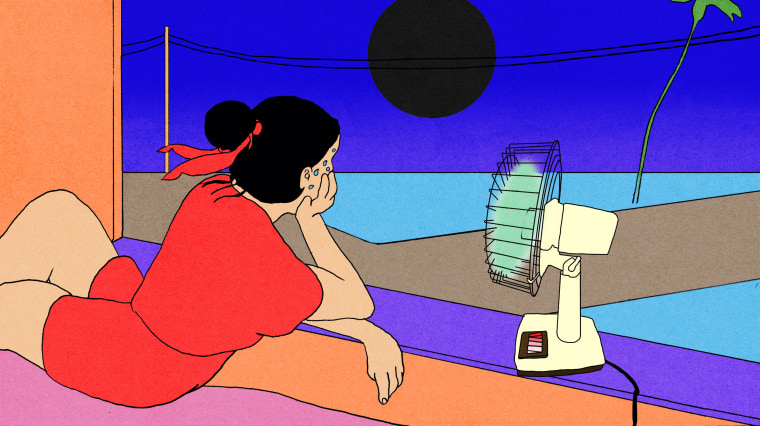In the waterfront city of Santa Monica, California, on the western border of Los Angeles, residents have certain expectations about the climate. The days are warm, the nights are cool, and the ocean breeze keeps the temperature comfortable.
Those weather expectations are what Santa Monica native Colin Specter looked forward to when he moved back home from New York in 2016. Instead, Specter and his wife found the region gripped by a series of heatwaves that baked the city even at night.
“It was just hotter than it ever had been the last couple summers,” Specter, 32, said. “Growing up in Los Angeles, that was not the norm.”
Like most older apartments in the city, Specter’s didn’t have air conditioning. They tried to beat the heat with cool sheets and a fan, but that didn’t work. Eventually, tired of sweating in bed, they broke down and bought an air conditioner.
Heatwaves have become more common in California over the past three decades, potentially worsening the state’s wildfire season and, in the case of a prolonged 2006 heat wave, causing scores of deaths. And it’s not just happening in California.
An NBC News analysis of daily temperatures from more than 500 weather stations across the United States shows that over the past 40 years, nights in most regions of the country have warmed more than the days. But far from being a mild annoyance that causes sleepless nights, scientists say the trend is a consequence of a changing climate and warn that it could have dire effects on health and agriculture.
NBC News’ analysis looked at the rate at which record-high and record-low nighttime temperatures were set in each decade. During the 1960s, weather stations across the country recorded approximately 0.9 record-high night temperatures for every record low. In the 1990s, the ratio of record-highs to lows was 1.4. And in the 2010s, through Sept. 6, there were 1.7 record highs for every record low.
This ratio is even higher in certain regions. In the Northeast, which stretches from Maryland to Maine, there have been 2.2 record-high night temperatures set for every record low since 2010. In Utah, Colorado, Arizona and New Mexico, the ratio is 3.4. And in California and Nevada, the ratio is 3.6.
In a stable climate, the ratio of record highs to lows would be about 1 to 1, said Gerald Meehl, senior scientist at the National Center for Atmospheric Research. But the fact that the warmer records are occurring more often than cold ones is evidence of a warming planet.
“As the average temperature goes up, you're getting a better chance for heat extremes,” Meehl said. “You're shifting the odds.”
Warming nights can have a significant impact on people’s health, scientists say. Hotter nighttime temperatures provide less relief during heatwaves and put those without access to air conditioning at increased risk of heat-related illnesses.
Heat was the No. 1 weather-related cause of death in 2018, according to National Weather Service data, killing more people than floods, tornadoes, and hurricanes combined.
“The night time temperature is a big determinate of how much a heat wave impacts us,” said Kristina Dahl, senior climate scientist at the nonprofit Union of Concerned Scientists. “We need the opportunity to cool down during a heat wave. When nighttime temperatures don't give us that relief, it has a bigger impact on our health."
“Certain crops need a certain number of days below a temperature threshold in order to bloom,” said Neil Berg, a scientist at UCLA’s Center for Climate Science. "The disruption could impact the performance of crops in the region."
In California, organizations and governments have worked together on strategies to lessen heat’s effect on residents. In Los Angeles, the city passed a law in 2013 requiring all new homes to include roofs that reflect sunlight. The city is experimenting with street coatings that would have a similar effect.
But experts say these are reactionary tactics, and that without a massive shift in human culture that reduces greenhouse gas emissions, heat rise will continue and accelerate in the future.
“If we don't reduce emissions, all we're doing will be for naught,” said Jonathan Parfrey, executive director of Climate Resolve, the California group that championed the cool-roof and -streets projects. “The additional warming will override any of the beneficial activities.”

